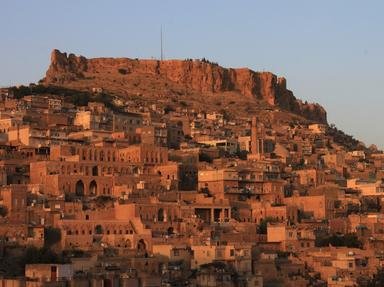Quiz Answer Key and Fun Facts
1. In which ancient city was the Great Ziggurat built?
2. During which dynasty in ancient Mesopotamian history was the Great Ziggurat built?
3. What was the function of the Great Ziggurat?
4. What qualification did a person have to meet before being able to enter the Great Ziggurat?
5. During the reign of which ancient king was the Great Ziggurat built?
6. The Great Ziggurat was dedicated to which deity?
7. What building material was used to construct the Great Ziggurat?
8. Which of the following was NOT part of the Great Ziggurat complex?
9. Which British archaeologist excavated the Great Ziggurat in the 1920s?
10. In what modern country is the Great Ziggurat located?
Source: Author
ponycargirl
This quiz was reviewed by FunTrivia editor
bloomsby before going online.
Any errors found in FunTrivia content are routinely corrected through our feedback system.


